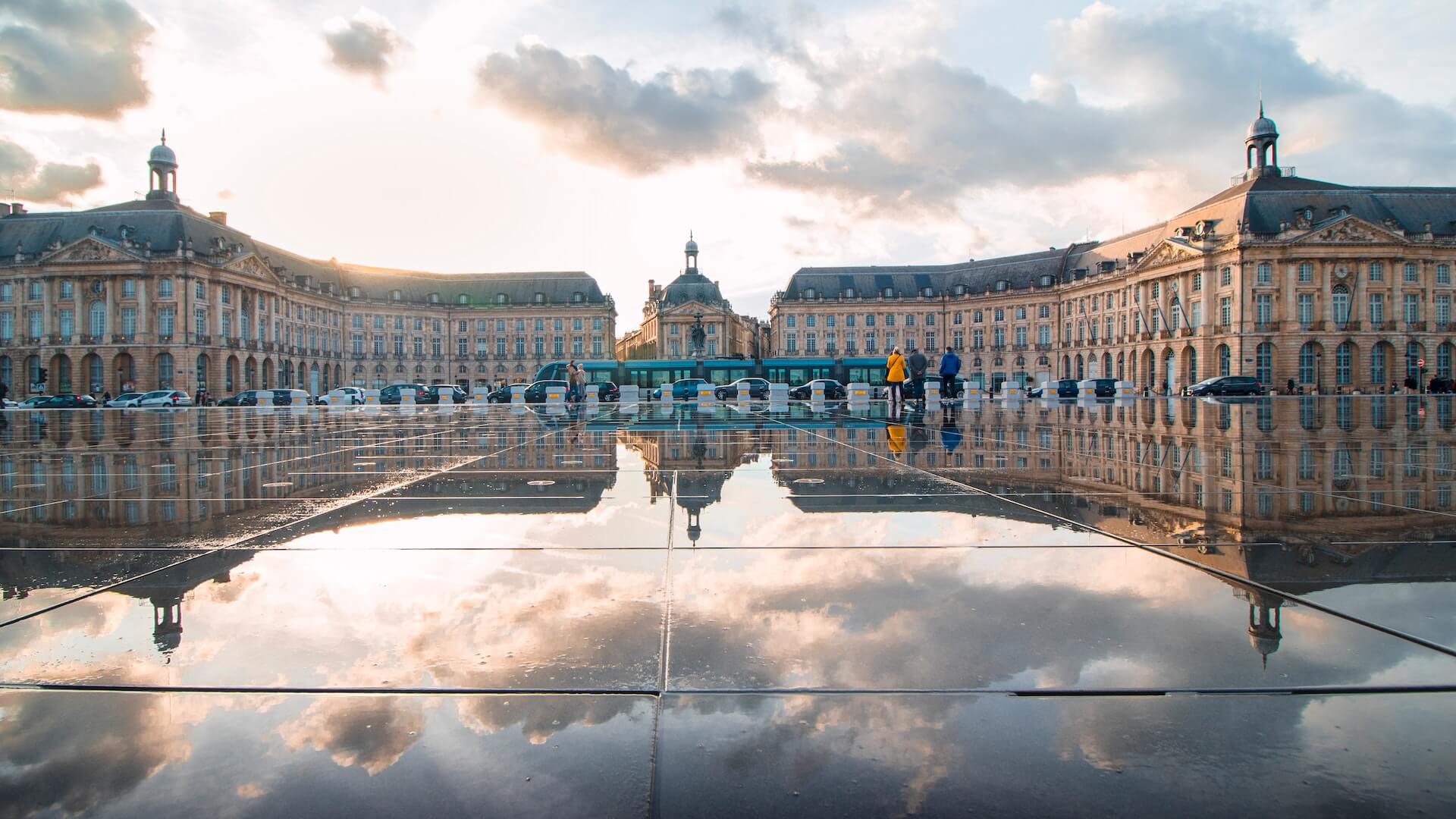Architecture is more than just buildings and structures. It is a form of art that encompasses both functionality and aesthetics. Every building tells a story, and the way it is designed can have a profound impact on the way we feel and interact with it. From towering skyscrapers to small homes, architectural design is everywhere around us and plays a crucial role in shaping our environment. In this blog post, we will delve deep into the world of architectural design and unveil its wonders. We will explore the history and evolution of architectural design, the different styles and techniques used in creating beautiful and functional structures, and how architects blend creativity and engineering to create awe-inspiring buildings. Whether you are a design enthusiast or just curious about the world around you, this post promises to be an enlightening and inspiring read.
Introduction: The importance and impact of architectural design
Architectural design is a captivating art form that has the power to shape our world in profound ways. From towering skyscrapers to intricately designed homes, architectural design not only provides functional spaces but also leaves a lasting impact on our senses and emotions.

One of the key aspects of architectural design is its ability to transform the way we experience and interact with our surroundings. It goes beyond mere aesthetics and encompasses functionality, sustainability, and cultural significance. A well-designed building or structure has the potential to enhance our quality of life, inspire creativity, and foster a sense of community.
The importance of architectural design extends beyond creating visually appealing structures. It plays a crucial role in shaping cities and urban landscapes, creating landmarks and icons that define a place’s identity. Iconic structures like the Eiffel Tower, Taj Mahal, and Sydney Opera House not only draw tourists but also become symbols of their respective locations.
The impact of architectural design is not limited to the physical realm but also extends to the social and environmental aspects. Sustainable design practices are gaining prominence, with architects incorporating energy-efficient technologies, green building materials, and innovative design strategies to minimize the environmental footprint of buildings.
Furthermore, architectural design has the power to evoke emotions and tell stories. It can reflect the culture, history, and values of a society, acting as a visual narrative. Architectural marvels like the ancient pyramids of Egypt or the Gothic cathedrals of Europe tell tales of human ingenuity, craftsmanship, and cultural heritage.
The history of architectural design: From ancient civilizations to modern times
The history of architectural design is a fascinating journey that takes us through the evolution of human creativity and ingenuity. From the magnificent structures of ancient civilizations to the groundbreaking innovations of modern times, architectural design has played a pivotal role in shaping the world we live in today.
Ancient civilizations such as the Egyptians, Greeks, and Romans left behind awe-inspiring architectural marvels that continue to captivate our imagination. The pyramids of Giza, the Parthenon, and the Colosseum are a testament to the grandeur and sophistication of their architectural prowess. These structures not only served functional purposes but also reflected the cultural, religious, and societal values of their time.
As we move through history, we witness the rise and fall of empires, each leaving their mark on the architectural landscape. The Gothic cathedrals of medieval Europe showcased intricate craftsmanship and a sense of divine transcendence. The Renaissance period brought a rebirth of classical ideals, with architects like Michelangelo and Brunelleschi pushing the boundaries of design and engineering.
Fast forward to the modern era, and we find ourselves amidst a revolution of architectural innovation. The Industrial Revolution brought about advancements in materials and construction techniques, leading to the birth of skyscrapers and the steel-framed buildings that define our urban landscapes. Architects like Frank Lloyd Wright and Le Corbusier challenged traditional norms, embracing new forms and concepts that celebrated functionality and minimalism.
Today, architectural design continues to evolve, driven by technological advancements, sustainability concerns, and the ever-changing needs of society. From eco-friendly buildings that harness renewable energy to futuristic designs that push the limits of imagination, the possibilities are endless.
Elements of architectural design: Form, function, and aesthetics
Architectural design is a captivating blend of creativity, functionality, and visual appeal. It encompasses a harmonious combination of various elements, each playing a crucial role in shaping the final masterpiece. When delving into the world of architectural design, it is essential to understand the fundamental elements that lay the foundation for every architectural marvel.

The first element, form, refers to the physical shape and structure of a building. It encompasses the overall layout, dimensions, and proportions of the structure. The form of a building is not merely about its external appearance; it also considers the internal spaces and how they are organized. Architects carefully craft the form to ensure it is both aesthetically pleasing and functional, taking into account factors such as natural light, ventilation, and spatial flow.
Functionality is another key element that architects consider during the design process. A building’s purpose and the activities it will accommodate heavily influence its design. Whether it is a residential, commercial, or public space, every architectural design should be efficient and meet the specific needs of its users. Balancing practicality and aesthetics, architects meticulously plan the layout, ensuring that spaces are optimized for their intended use while providing comfort and convenience.
Aesthetics, the third element, is what sets architectural design apart as an art form. It encompasses the visual appeal and beauty of a structure. Architects strive to create designs that evoke emotion and leave a lasting impression. They carefully select materials, colors, textures, and architectural features to create a cohesive and visually striking composition. Aesthetics can vary greatly depending on architectural styles, cultural influences, and the intended atmosphere of the building.
Famous architectural landmarks: Exploring iconic structures around the world
The world is adorned with a myriad of architectural wonders that captivate the imagination and leave us in awe of human creativity and ingenuity. From towering skyscrapers to ancient temples, each architectural landmark tells a unique story and showcases the rich cultural heritage of its respective region.
One such iconic structure is the Taj Mahal in Agra, India. This magnificent marble mausoleum, built in the 17th century, is a testament to the eternal love of Emperor Shah Jahan for his wife Mumtaz Mahal. Its symmetrical design, intricate carvings, and mesmerizing domes make it a masterpiece of Mughal architecture and a UNESCO World Heritage Site.
Moving across continents, we find ourselves in Paris, France, where the Eiffel Tower stands tall as a symbol of romance and engineering prowess. Designed by Gustave Eiffel, this iron lattice tower has become an iconic landmark of the city since its completion in 1889. Its intricate ironwork and panoramic views from the top attract millions of visitors each year.
In the United States, the Statue of Liberty in New York City proudly stands as a symbol of freedom and hope. Designed by Frédéric Auguste Bartholdi and Gustave Eiffel, this colossal copper statue was gifted to the United States by France in 1886. With its torch held high and welcoming stance, it has become an emblem of liberty and a must-visit attraction for tourists.
Venturing to the East, we encounter the Great Wall of China, a monumental feat of engineering that stretches over 13,000 miles across the country’s landscape. Constructed over centuries to protect the Chinese empire, this UNESCO World Heritage Site is a testament to human determination and strategic design.
Architectural styles: From Gothic to Art Deco, understanding the different design movements
Architecture is not just about constructing buildings; it is an art form that reflects the values, beliefs, and aesthetics of a particular time and place. Throughout history, various architectural styles have emerged, each with its own unique characteristics and influences.

One of the most iconic architectural styles is Gothic, which originated in the 12th century and is characterized by its pointed arches, ribbed vaults, and elaborate ornamentation. Gothic architecture is often associated with grand cathedrals and churches, with its soaring spires and intricate stained glass windows.
Moving forward in time, we encounter the Renaissance period, marked by a return to classical architectural principles. Inspired by the architectural achievements of ancient Greece and Rome, Renaissance buildings feature symmetrical designs, domes, and columns. Prominent examples of this style can be seen in iconic structures such as the Florence Cathedral and the Palazzo Vecchio in Italy.
As we progress into the 20th century, we witness the rise of the Art Deco movement. This style is characterized by its geometric patterns, bold colors, and streamlined forms. Art Deco architecture can be seen in iconic structures like the Chrysler Building in New York City and the Palais de Tokyo in Paris.
More recent architectural styles include Modernism, characterized by its emphasis on functionality and simplicity, and Postmodernism, which combines elements from various architectural traditions to create eclectic and playful designs.
Understanding these different architectural styles not only allows us to appreciate the beauty and craftsmanship of historical buildings but also provides inspiration for contemporary design. By learning from the past, architects can create innovative and groundbreaking structures that push the boundaries of what is possible.
Sustainable architecture: Designing for a greener future
Sustainable architecture is not just a passing trend; it is a holistic approach to designing buildings that prioritize environmental conservation and long-term sustainability. With the increasing global awareness of climate change and the depletion of natural resources, architects are playing a crucial role in shaping a greener future.
Designing for sustainability involves considering various factors, such as energy efficiency, use of renewable materials, waste reduction, and the integration of green spaces. By incorporating these principles into architectural design, buildings can minimize their carbon footprint and contribute positively to the environment.
One key aspect of sustainable architecture is energy efficiency. This involves employing innovative techniques to reduce the energy consumption of buildings, such as utilizing natural ventilation, optimizing insulation, and incorporating renewable energy sources like solar panels. By minimizing energy usage, buildings can significantly reduce their greenhouse gas emissions and lower their impact on the planet.
Another important consideration is the use of sustainable materials. Traditional construction materials often contribute to deforestation, pollution, and waste accumulation. Sustainable architecture promotes the use of eco-friendly materials like bamboo, reclaimed wood, recycled steel, and low-impact concrete alternatives. These materials not only reduce the extraction of finite resources but also have lower energy requirements during production and can be recycled or repurposed at the end of their lifespan.
Waste reduction is also a key element of sustainable architecture. This involves designing buildings with efficient waste management systems, incorporating recycling facilities, and promoting the use of recycled materials. Additionally, architects can adopt principles of adaptive reuse, transforming existing structures into functional spaces rather than demolishing and constructing anew. This approach not only saves resources but also preserves the cultural and historical significance of buildings.
Lastly, sustainable architecture places a strong emphasis on the integration of green spaces and biophilic design. Incorporating plants, gardens, and green roofs into buildings not only enhances aesthetic appeal but also improves air quality, reduces urban heat island effect, and provides spaces for relaxation and recreation. These green elements create a harmonious connection between humans and nature, promoting physical and mental well-being.
The role of technology in architectural design: Innovations and advancements
In the ever-evolving world of architectural design, technology plays a pivotal role in shaping the future of this creative field. From drafting board to computer-aided design (CAD) software, the integration of technology has revolutionized the way architects conceptualize, design, and construct buildings.
One of the most significant advancements in architectural design technology is the advent of Building Information Modeling (BIM). This digital representation of a building allows architects, engineers, and contractors to collaborate seamlessly, enhancing communication and reducing errors during the design and construction phases. BIM enables a comprehensive and multidimensional approach, integrating data on building materials, systems, and processes to create a virtual representation of the structure.
The use of virtual reality (VR) and augmented reality (AR) is also revolutionizing architectural design. These immersive technologies provide architects and clients with the ability to visualize and experience a building before it is even constructed. Using VR headsets or AR apps, stakeholders can walk through a virtual version of the building, exploring different spaces, materials, and lighting conditions. This not only aids in decision-making but also helps identify potential design flaws and allows for adjustments to be made early in the process.
Furthermore, advancements in 3D printing technology have opened up a world of possibilities in architectural design. Architects can now create intricate and complex models with ease, allowing for a more detailed representation of their vision. 3D printing also offers the potential for sustainable construction practices, as it allows for the use of recycled materials and reduces construction waste.
Additionally, the rise of computational design has empowered architects to explore innovative and unconventional design solutions. Through the use of algorithms and parametric modeling, architects can generate complex forms and structures that were previously unimaginable. This approach not only enhances design possibilities but also optimizes energy efficiency and sustainability.
The process of architectural design: From concept to construction
Architectural design is a fascinating journey that takes an idea and transforms it into a physical structure that stands the test of time. From concept to construction, the process involves careful planning, intricate detailing, and collaboration between various professionals.

It all starts with the initial concept, where the architect begins to shape their vision. This stage involves brainstorming, research, and understanding the client’s needs and desires. The architect explores different design styles, materials, and layouts, considering factors such as functionality, aesthetics, and sustainability.
Once the concept is solidified, the architect moves on to creating detailed drawings and plans. This includes architectural drawings, floor plans, elevations, and 3D models. These documents serve as a guide for the construction team and help visualize the final structure.
The next step is obtaining necessary approvals and permits. Architects work closely with local authorities and regulatory bodies to ensure compliance with building codes and regulations. This process can be complex and time-consuming, but it is crucial to ensure the safety and legality of the project.
With approvals in hand, the project moves into the construction phase. Architects collaborate with engineers, contractors, and other professionals to bring the design to life. This stage involves site visits, regular inspections, and constant communication to ensure that the design is implemented accurately.
Throughout the construction process, architects remain involved, addressing any design changes or challenges that may arise. They also work closely with the client to ensure their vision is being realized and make any necessary adjustments along the way.
Finally, the project reaches completion, and the architectural design is unveiled to the world. The structure stands as a testament to the creativity, skill, and collaboration of the architectural team. It becomes a part of the surrounding environment, influencing and enhancing the lives of those who interact with it.
The impact of architectural design on communities and societies
One of the key aspects of architectural design is its ability to create a sense of place and identity. Iconic landmarks, such as the Eiffel Tower or the Taj Mahal, not only serve as tourist attractions but also become symbols of national pride and cultural heritage. These structures have the power to unite people and foster a collective sense of belonging.
Moreover, architectural design plays a crucial role in urban planning and development. Well-designed cities with efficient transportation systems, pedestrian-friendly streets, and green spaces can enhance the quality of life for residents. Thoughtfully planned communities promote social interaction, encourage physical activity, and create opportunities for economic growth.
Architectural design also has the potential to address social issues and promote inclusivity. For example, designing buildings and public spaces that are accessible to people with disabilities ensures that everyone can fully participate in society. Similarly, incorporating sustainable design principles into architectural projects can help mitigate the environmental impact of buildings and contribute to a more sustainable future.
Furthermore, architectural design can serve as a catalyst for economic development. Iconic structures and innovative designs can attract tourists, generate revenue, and create job opportunities. Architectural marvels like the Burj Khalifa in Dubai or the Sydney Opera House have become major tourist attractions, driving economic growth and putting their respective cities on the global map.
Conclusion
From iconic structures to innovative designs, we have uncovered the wonders that shape our cities and inspire our imaginations. Architectural design is a fascinating field that combines art, science, and functionality to create breathtaking structures that stand the test of time. Whether you are an aspiring architect or simply have an appreciation for beautiful buildings, we hope this blog post has provided you with a glimpse into the captivating world of architectural design. Keep exploring, keep dreaming, and never stop marveling at the wonders that surround us.


